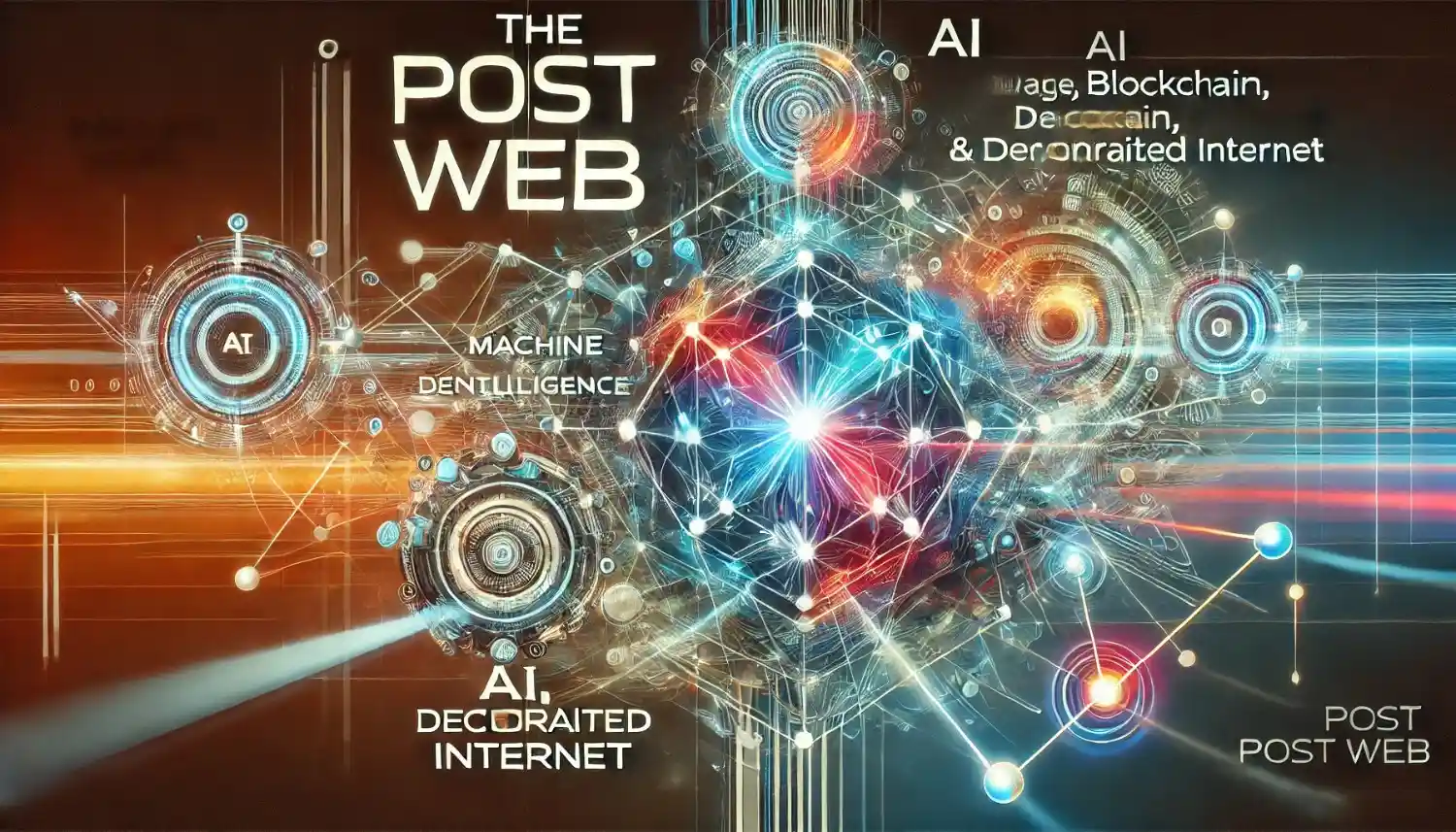As blockchain and cryptocurrency push the internet toward decentralization, the transition from Web 3.0 to the Post Web is underway. With its young, tech-savvy population and heavy investment in advanced technologies, the Middle East is poised for early adoption of this new decentralized internet model.
Outlier Ventures, a London-based venture capital firm and accelerator specializing in Web3 and blockchain ecosystems, has launched its “Post Web Thesis.” This new vision builds on the company’s 2016 “Convergence Thesis,” which predicted that artificial intelligence (AI) would merge with Web3 infrastructure to simplify its complexity and improve usability.
In this new era, AI agents are poised to manage tasks like signing transactions, handling fees, and bridging chains, making digital property rights and decentralized apps (dApps) more accessible and scalable. Jamie Burke, CEO and founder of Outlier Ventures, explained to Arab News that in the Post Web, users will not only read, write, and own but will also have the ability to delegate tasks through AI agents.
AI agents are autonomous software powered by AI, capable of interpreting user intent, gathering context, and executing tasks across decentralized networks. These agents will handle tasks such as booking appointments and managing transactions, interacting with blockchain technology to enable users to perform tasks without centralized authority. Over time, these agents could gain economic agency by interacting with distributed ledger technologies, enhancing efficiency and reducing dependency on central authorities.
Burke identified the Middle East and North Africa as prime candidates for early adoption due to the region’s young, tech-savvy population and significant investments in technology. The region’s advantages could position it as a global leader in Post Web innovation and development.
Web3 has defined the “read-write-own” era of the internet, using blockchain technology to grant users greater control over their data and assets. In contrast to the centralized platforms of Web 2.0, Web3 enables peer-to-peer interactions without intermediaries. However, despite its promise, Web3 has faced challenges in mass adoption due to its complexity, which has hindered widespread usage.
The Post Web aims to address these challenges by combining AI and blockchain to create a more user-friendly internet. Instead of operating within the confines of the “attention economy,” the Post Web will shift toward an “intention economy,” where user needs and goals drive interactions and value creation.
This new paradigm will allow for more efficient, intention-driven interactions between users and machines. In the Post Web, much of the consumer internet could be outsourced to intelligent agents that bypass traditional search engines, price comparison websites, and apps. These agents will directly access application programming interfaces (APIs) and other agents to find information and make comparisons, resulting in faster and more personalized services.
In an intention economy, AI agents will align user goals with services or products through dynamic, contextual interfaces, enabling more valuable interactions while minimizing waste. This shift will reduce the exploitation of users’ attention, focusing instead on fulfilling their real needs.
A practical example of how the Post Web will transform online experiences is in booking a family holiday. Traditional websites are often cluttered with irrelevant ads and packages that don’t meet specific needs. Price comparison websites, too, prioritize results based on auction placements, leading to confusion and inefficiency. In the Post Web, an AI agent could analyze various insurance plans and recommend the best coverage for a family with diverse interests, factoring in skill levels, weather conditions, and other personalized elements.
The Post Web will also eliminate inefficiencies in the consumer internet and software-as-a-service sectors by removing unnecessary intermediaries. This will lead to faster, cheaper, and better solutions, benefiting both consumers and service providers.
Burke calls this evolution a “Supercycle” that will drive widespread adoption of these technologies, ultimately bringing billions of users and real-world assets onto blockchain networks. This shift will also create valuable investment opportunities, as digital assets tied to real-world supply and demand can be analyzed like traditional commodities. This could lead to massive institutional and retail investments in digital assets, opening the door for new financial opportunities in the digital economy.
However, Burke emphasizes that the Post Web transition is a vision that will evolve over time. Web3 was introduced a decade ago, and while the Post Web is emerging now, it will continue to evolve in the next decade. During this time, AI agents will increasingly handle user tasks, and the most relevant technologies will converge into the Post Web, while obsolete systems, like app stores and search engines, may fade away.















